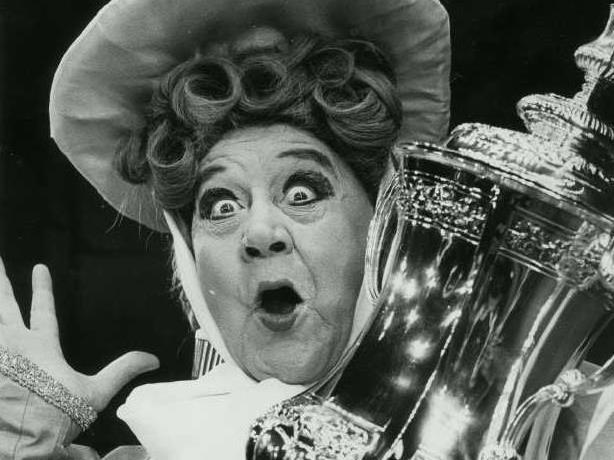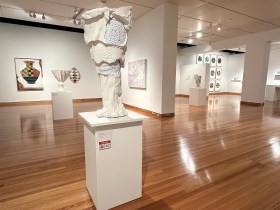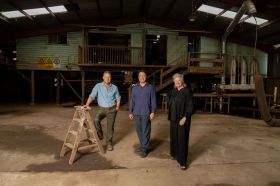Image: Flickr CC, Tyne & Wear Archives & Museums
It’s that time of the year when museums, galleries and various other arts organisations announce the opening of their annual awards. Increased funding, changing formats of awards, and new developments not only aim to benefit the winning artists, but also seek to add a cultural, social and professional difference to the participating artists’ careers, as well as the art industry.
Like the Shepparton Art Museum’s (SAM) Australian Ceramics Award, which shifted to an exhibition commission format instead of asking for single works from only three artists.
Director SAM, Kirsten Paisley said, ‘This is because we wanted to encourage ceramic artists with a craft background to not just be focused on the object but actually consider an exhibition concept: developing a proposal around how their work would be presented keeping in mind the viewer and the installation of their work.’
Helping shift the craft of ceramics into the art of ceramics with a rich award like the Sidney Myer Fund Australian Ceramics Award (SMFACA) bodes well for the medium and also opens up hitherto unknown avenues for artists to explore.
Julia DeVille, winner of the 2013 Woollahra Small Sculpture Prize felt the same way.
‘Winning the Woollahra Small Sculpture Prize was such a massive honour. I had been a finalist about four times and won the Viewers’ Choice award each time so it was really amazing to win the overall prize as well.
‘I think it’s such an important prize as there is not a lot out there for sculptors that work on small indoor sculptures,’ she added.
Apart from the honour of winning the prize, engaging with a public gallery exposes artists to a range of professional development opportunities.
For example, SAM will provide a professional entourage of museum staff to assist the five shortlisted ceramicists with their solo exhibitions.
‘Their work will be written about professionally in the catalogue that we will produce; we’ll have curators writing about their work and have them professionally photographed.
‘There’s also an online presence along with programming, seminars, workshops and so on around the exhibition.
‘These are the kind of things that the artists have said in their feedbacks to us that have greatly assisted them in the development of their careers: that they have got a professional catalogue that they can show people, and also the exposure that they get through the exhibition at the museum and the media generated around it has been of great benefit,’ said Paisley.
Shortlisted candidates also e get the benefit of networking, professional development and engaging with the visitors in a more comprehensive way.
The City of Albany Art Prize hopes to do things differently, both in terms of providing more time and space for artists to focus on their art, and to add more value to the prize.
Kate Parker, Coordinator of the City of Albany Art Prize said, ‘One thing we are doing different is we actually have a studio residency, you get free accommodation and an art space for a month at the Vancouver Art Centre with expenses, along with the acquisitive prize.
‘That’s one thing that we see as really valuable especially with the local community. It’s what the residency is really for: it’s aimed at giving artists a kind of time out, to get time to develop their own work.’
Jo Jansyn, Cultural Development Coordinator, Community Services Woollahra Municipal Council, said that finalists to the prize have included first time through to high profile artists.
‘There are different values and opportunities [the prize brings] for artists at different stages of their careers.
‘However, a lot of people see the prize so there is opportunity to have your works sold, establish new contacts in the industry and engage with the community.’
Getting a commission to do professional work can also be one of the results of winning an Art prize. Angela McCarthy, Senior Lecturer of Theology at School of Philosophy and Theology, The University of Notre Dame Australia said this about the Mandorla Art Award, one of Australia’s most significant thematic Christian art prize, detailing its importance in the larger context of Australian art.
‘One of our winners was commissioned to do the Arch Bishop’s Portrait and I know another of our winners is exhibiting well in Melbourne.’
‘My hope and what I am seriously working towards is that the religious community who are interested in religious art will become better connected to the arts community.
‘We’ve got a whole lot of artists interested in religious art, so we can help the religious institutions to engage with the artist community to help and support each other and to nurture it,’ she added.
But the monetary benefit can certainly not be dismissed. Paisley believes that the $2000 stipend to each of the five shortlisted artists of the SMFACA should enable the artist to go and explore contemporary ceramics, seek new opportunities or look at better resourcing their studios with equipment.
‘The money should enable artists to take time away from working life to be able to focus on their art practice.
‘And that is the thing that a $50,000 prize offers, it’s a financial relief, which hopefully enables artists to engage in their art practice for a longer period of time,’ she added.





